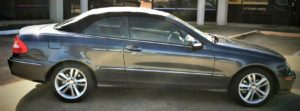The Difference Between 20% LTV and 50% VLT Ceramic Window Tint
There are many reasons to choose a higher level of window tint. Ceramic window tint is more expensive than regular window tint. The difference in price can be quite significant. However, the benefits of using ceramic window tint are worth the additional cost. Ultimately, the decision is yours to make, but knowing the difference is essential when deciding on a window tinting product.
5% ltv vs 20% ltv vs 50% ltv
If you’re wondering how to choose the right window tint for your home or office, you need to consider VLT (variable light transmission). Basically, the lower the VLT, the darker the film. A 5% VLT film will let through about 5% of visible light, while a 70% VLT film will allow 70% of visible light to pass through. Most auto makers tint glass with a VLT of 80%.
Basically, the lower the VLT, the darker the film. A 5% VLT film will let through about 5% of visible light, while a 70% VLT film will allow 70% of visible light to pass through. Most auto makers tint glass with a VLT of 80%.
The VLT is the amount of visible light reflected. It measures the amount of solar heat and visible light that are reflected. A higher LE allows more visible light to pass through while blocking more heat. In general, higher LE values will reduce the amount of heat entering the room.
The VLT film will reduce glares. This tint will prevent you from being bothered by glares while driving. This film will also protect your car’s glass from being broken. This film is a low-cost investment that will give you a new look for your car.
5% ltv vs 30% ltv
If you are considering installing window tint on your car, you should know that there are a number of factors to consider. The first factor is how much light can penetrate the window. A high VLT means that most of the visible light cannot penetrate it, whereas a low VLT means that most of the light can pass through. Basically, the higher the percentage of VLT, the better.
Aside from blocking the sun’s ultraviolet rays, ceramic window tint also helps lower the interior temperature. This type of window film also does not fog up the windows and is highly durable. It also is non-metallic, which means that it does not interfere with electronic signals and is safe to use for a long time.
Another factor to consider is the percentage of visible light that is let through the window. A lower percentage of VLT will give the window a darker tint. For instance, a 5% VLT window film will let through only 5% of the light, while a higher percentage will let through 70% of the light. Most factory installed windows do not allow 100% of visible light to pass through, but most automakers tint glass with a VLT of around 80%.
5% ltv vs 50% ltv
The main difference between 5% LTV and 50% VLT window tints is the amount of visible light reflected. The higher the percentage, the more visible light will be reflected. Likewise, a higher VLT percentage will let more visible light pass through and less heat.
The percentage of tint can be adjusted to meet individual needs. It is important to check local laws regarding window tinting. If your state forbids tinting windows, you will have to remove the film and replace it with a new one. If you are not sure whether your state allows a certain percentage of window tint, contact a window tinting company and ask about the law and what percentage is allowed.
5% LTV window tint is legal to install on the front two doors of a vehicle, but it is illegal to tint the windshield. A 70% tint is still nearly clear, so the look of the glass will remain unaltered.
5% ltv vs 70% ltv
When it comes to heat rejection and UV protection, ceramic window tints stand out as the clear winner. Ceramic film blocks 98% of infrared heat, preventing it from entering the vehicle cabin. This high-tech film contains ceramic particles that scatter infrared rays and bounce them back into the atmosphere. This type of tint can really make a difference on a hot sunny day when you are snarled in traffic.
There are many benefits of using a high-end window tint. Not only will you get better protection, but you can customize it for your specific car, making it a perfect fit. For example, Alta Mere’s Solar Ceramic Plus, Precut Ceramic Window Tint in 70% offers 98% UV and infrared protection. The precut film is easy to install, and the company offers precut products for most vehicle types.
While carbon and dyed window film has been around for a while, technological advancements have led to better and more practical window tints. The next step is Carbon Color Stable Tint, which offers practical heat rejection that will not fade.


2 Responses